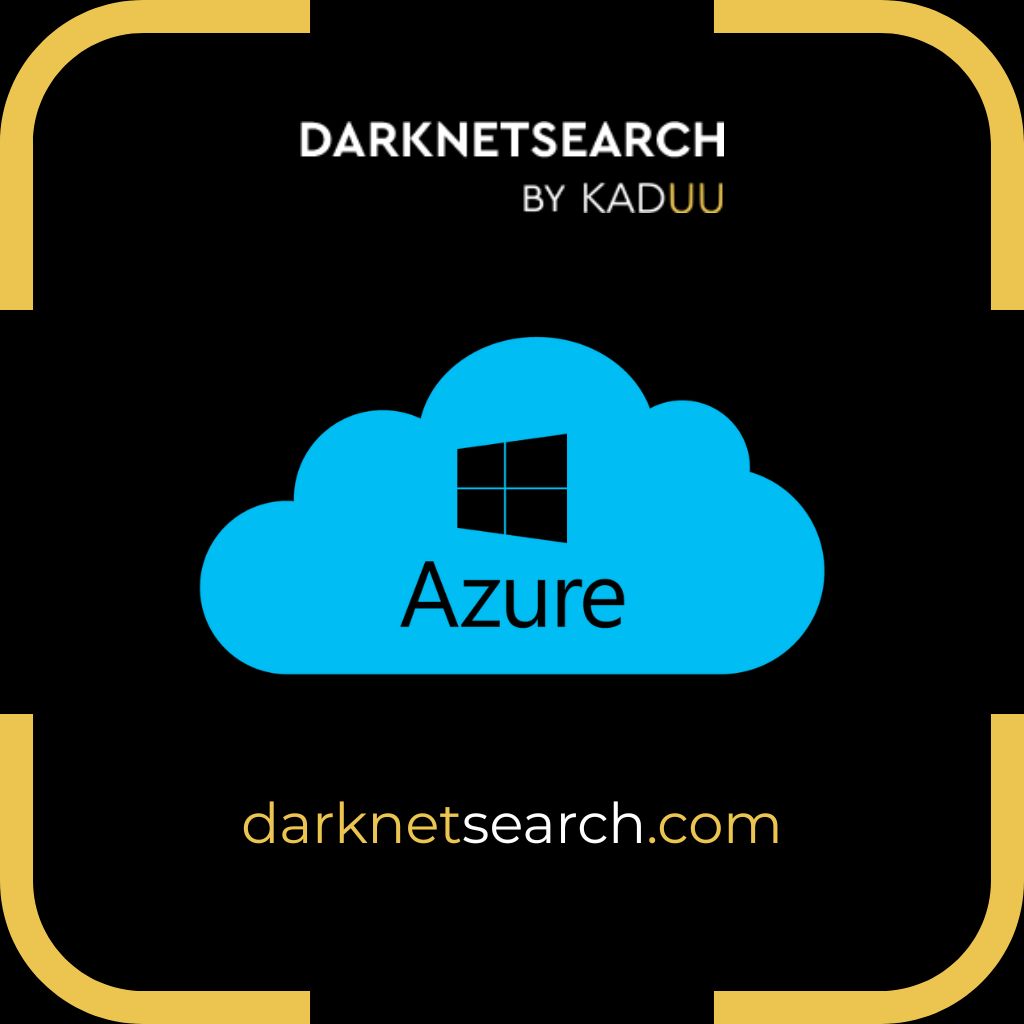➤Summary
The cybersecurity world was rocked this week by a shocking revelation: a massive 4TB database backup of EY (Ernst & Young) was found publicly accessible on Microsoft Azure. The discovery, first reported by GBHackers on Security, highlights once again how a simple cloud misconfiguration can lead to an enormous Azure exposure, compromising confidentiality (CIA TRIAD) and shaking enterprise trust in cloud resilience.
This incident demonstrates a growing challenge in cloud infrastructure — balancing speed, automation, and security. The EY exposure not only risks sensitive data but also calls into question how organizations handle backups, permissions, and compliance at scale. ☁️
What Exactly Happened in the EY Azure Exposure?
During routine internet scanning, researchers from Neo Security discovered an unprotected .BAK file — a full Microsoft SQL Server backup — hosted on an Azure Blob Storage container. The exposed file was a 4TB backup belonging to EY’s infrastructure. According to Neo Security’s disclosure post, the team verified ownership through DNS and Azure metadata that linked directly to EY’s internal domains.
The researchers found that the storage bucket was configured for public access, meaning anyone with the link could download the entire backup. A simple HEAD request confirmed a file size of over 4 terabytes — a monumental amount of potentially sensitive information.
The .BAK file extension suggested it contained database tables, user credentials, client details, and application logic. As GBHackers reported, such backups typically hold business-critical data that can easily expose APIs, session tokens, and stored procedures if leaked.
This wasn’t a hack or infiltration — it was a configuration bug within the Azure storage settings that bypassed the CIA Triad’s fundamental pillar of Availability and Confidentiality. In short: no attacker broke in; the door was already open. 🚪
Why Cloud Misconfiguration Remains a Silent Killer 😬
Cloud misconfiguration is one of the most frequent causes of data exposure today. Misconfigured permissions, overlooked access policies, or automated deployments can accidentally set cloud assets to “public.” In this case, EY’s Azure storage was simply left unsecured — proving how automation without validation can lead to global-scale data exposure.
Here’s what made this Azure exposure particularly dangerous:
- Scale of the data: A 4TB backup could hold millions of records.
- Public visibility: The backup was accessible to anyone with a direct link — no login required.
- Search engine risk: Such files can be indexed by automated crawlers or bots scanning for open Azure buckets.
- Insider awareness: The Kaduu Team, while monitoring deep-web chatter, noted that references to “EY SQL Backup Leak” appeared within hours, showing how fast these exposures spread underground.
This is not just an EY issue — it’s a warning to every enterprise relying on cloud backups without proper encryption and access control.
The Technical Breakdown 🔍
The root of the issue lies in Azure Blob Storage ACLs (Access Control Lists). When storage accounts are created, they can be configured for public, private, or shared access. In EY’s case, one container had its access level mistakenly set to “Blob (anonymous read access for blobs only).”
That meant:
✅ Anyone with the direct URL could read the file.
❌ No authentication or Azure AD token was required.
This kind of Azure exposure occurs frequently when automated deployment scripts fail to enforce security defaults. Once identified, EY’s internal cybersecurity team reportedly took immediate action, closing the bucket and auditing related storage accounts.
The lesson? Default permissions are not enough. Continuous auditing and external attack surface monitoring are critical.
The Ripple Effects on EY and Its Clients 🌐
A firm like EY deals with highly sensitive information — from financial audits and tax filings to M&A deals and client risk assessments. A 4TB data exposure could theoretically include:
- Internal project data and client portfolios
- Employee credentials and hashed passwords
- Database schemas and APIs
- Emails, invoices, and audit trails
Even if no external actor accessed the file, exposure alone constitutes a major compliance breach, potentially triggering GDPR, ISO 27001, and regional data-protection violations.
Moreover, EY’s reputation — built on trust, integrity, and confidentiality — takes a hit when clients read headlines about a “massive 4TB Azure exposure.” This is the real-world cost of a cloud misconfiguration.
The Role of Early Detection and Dark-Web Intelligence 🕵️♂️
While internal scanners can detect misconfigurations, external threat monitoring plays a crucial complementary role. The Kaduu Team, known for dark-web and deep-web surveillance, detected early chatter referencing “EY-SQL Azure Leak” even before major media outlets published the story.
Platforms like darknetsearch.com use advanced crawling tools to monitor the dark web, helping organizations spot leaked credentials, exposed data, and breach mentions in underground communities.
Why Dark-Web Monitoring Matters
- Early Warnings: It detects exposure before public disclosure or exploitation.
- Leak Verification: Confirms if sensitive data has circulated online.
- Brand Protection: Identifies mentions of company assets or employees.
- Regulatory Readiness: Supports breach notifications with evidence.
Practical Tip 💡:
Integrate tools like darknetsearch.com into your cloud-monitoring stack. Combine internal audit logs with external visibility to create a truly resilient security posture.
Lessons Learned from the EY Azure Exposure ⚙️
- Automation Must Include Validation. DevOps pipelines should scan for public ACLs before deployment.
- Encrypt Everything. Backups should use AES-256 encryption even if stored within private networks.
- Monitor Continuously. Internal and external scanners must cross-validate cloud assets.
- Follow the CIA Triad. Availability shouldn’t compromise confidentiality or integrity.
- Adopt Zero-Trust Cloud Principles. Never assume cloud assets are private by default.
As Wired commented, this incident is “a powerful reminder that in the cloud, simplicity and danger often share the same line of code.”
The Bigger Picture: Why Cloud Misconfiguration Keeps Happening 🔄
Despite billions spent on cybersecurity, human error remains the weakest link. Companies move fast — spinning up cloud environments, deploying containers, creating backups — often without thorough governance checks.
The EY exposure mirrors earlier incidents involving open AWS S3 buckets, Google Cloud databases, and Azure misconfigured endpoints. The underlying issue:
“Security isn’t just about building walls — it’s about verifying every gate.”
Organizations need a proactive attack-surface management (ASM) approach, where both internal assets and external footprints are monitored 24/7.
Quick Checklist for Preventing Cloud Misconfigurations ✅
| Category | Action Item |
| Configuration Audits | Review Azure Blob access policies weekly. |
| Encryption | Encrypt all .BAK and .BAKPAC files at rest. |
| Public Access Alerts | Enable Azure Defender for Storage to flag anomalies. |
| Dark-Web Monitoring | Use darknetsearch.com for leak detection. |
| Incident Playbook | Establish rapid response workflows for exposures. |
| Training | Educate DevOps teams on secure deployment best practices. |
Following this checklist minimizes exposure and aligns with the CIA Triad by reinforcing Confidentiality and Integrity alongside Availability.
Expert Commentary 💬
Cybersecurity analyst Maria Koenig shared,
“The EY incident is not about hacking — it’s about hygiene. Cloud storage is powerful, but misconfiguration is its Achilles’ heel. What happened on Azure could happen anywhere, to anyone.”
She further emphasized that visibility tools like darknetsearch.com are essential in the age of rapid-deployment infrastructures, where one overlooked permission can unravel years of security investment.
Conclusion: The Wake-Up Call for Cloud Security 🚨
The massive 4TB EY database backup found publicly accessible on Azure serves as a wake-up call for enterprises worldwide. It underscores the dangers of cloud misconfiguration and how quickly such an Azure exposure can spiral into a global crisis.
To prevent recurrence, businesses must embed security automation, continuous dark-web monitoring, and multi-layered cloud validation in their workflows. Because in today’s digital ecosystem, data isn’t just an asset — it’s your organization’s identity.
🎯 Discover much more in our complete guide
💼 Request a demo NOW
Your data might already be exposed. Most companies find out too late. Let ’s change that. Trusted by 100+ security teams.
🚀Ask for a demo NOW →Q: What is dark web monitoring?
A: Dark web monitoring is the process of tracking your organization’s data on hidden networks to detect leaked or stolen information such as passwords, credentials, or sensitive files shared by cybercriminals.
Q: How does dark web monitoring work?
A: Dark web monitoring works by scanning hidden sites and forums in real time to detect mentions of your data, credentials, or company information before cybercriminals can exploit them.
Q: Why use dark web monitoring?
A: Because it alerts you early when your data appears on the dark web, helping prevent breaches, fraud, and reputational damage before they escalate.
Q: Who needs dark web monitoring services?
A: MSSP and any organization that handles sensitive data, valuable assets, or customer information from small businesses to large enterprises benefits from dark web monitoring.
Q: What does it mean if your information is on the dark web?
A: It means your personal or company data has been exposed or stolen and could be used for fraud, identity theft, or unauthorized access immediate action is needed to protect yourselfsssss.

